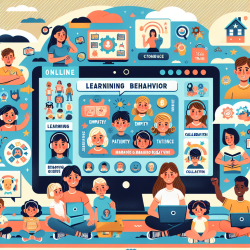Introduction
In the evolving landscape of healthcare, digital health technologies have emerged as a promising solution to enhance care for children with special health care needs. The scoping review titled "Use of Synchronous Digital Health Technologies for the Care of Children With Special Health Care Needs and Their Families" provides valuable insights into how these technologies can be effectively utilized to improve access to care and outcomes for this vulnerable population.
Understanding Synchronous Digital Health Technologies
Synchronous digital health technologies involve real-time interactions between patients and healthcare providers using audio, video, and health information interfaces. These technologies are particularly beneficial for children with special health care needs, who often require frequent and specialized care. By leveraging digital health, we can bridge the gap between patients and healthcare providers, offering timely and effective interventions.
Key Findings from the Research
The scoping review highlighted several models of synchronous digital health interventions, including:
- Feasibility Studies: These studies assess the practicality of implementing digital health solutions, focusing on factors such as acceptability, demand, and integration.
- Direct Care Interventions: Digital health technologies can replace or complement in-person assessments, providing direct care to children with complex medical needs.
- Parental Support and Training: Digital platforms can be used to train and support parents in delivering care, improving both child and family outcomes.
Despite the potential benefits, the review also identified barriers to implementation, such as technical challenges, human factors, and system-level constraints.
Practical Applications for Practitioners
For practitioners looking to enhance their practice through digital health technologies, the following strategies can be considered:
- Incorporate End-User Feedback: Engage families and healthcare providers in the design and implementation of digital health interventions to ensure they meet the needs of end-users.
- Address Technical Barriers: Ensure that necessary infrastructure and technical support are in place to facilitate seamless digital interactions.
- Promote Care Equity: Consider the accessibility of digital health solutions for all families, including those in rural or underserved areas.
Encouraging Further Research
While the review provides a comprehensive overview of existing research, there is a need for further studies to explore the long-term impacts of digital health interventions on children with special health care needs. Practitioners are encouraged to participate in research initiatives and contribute to the growing body of evidence supporting digital health solutions.
Conclusion
Digital health technologies hold immense potential to transform care for children with special health care needs. By embracing these solutions, practitioners can enhance access to care, improve outcomes, and support families in managing complex health conditions. To read the original research paper, please follow this link: Use of Synchronous Digital Health Technologies for the Care of Children With Special Health Care Needs and Their Families: Scoping Review.










